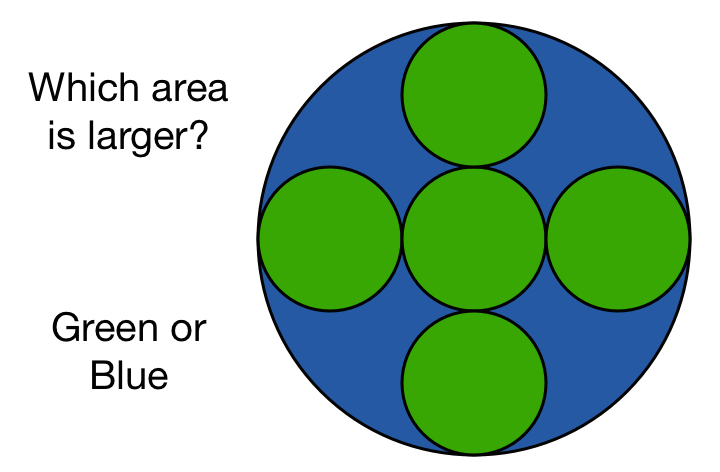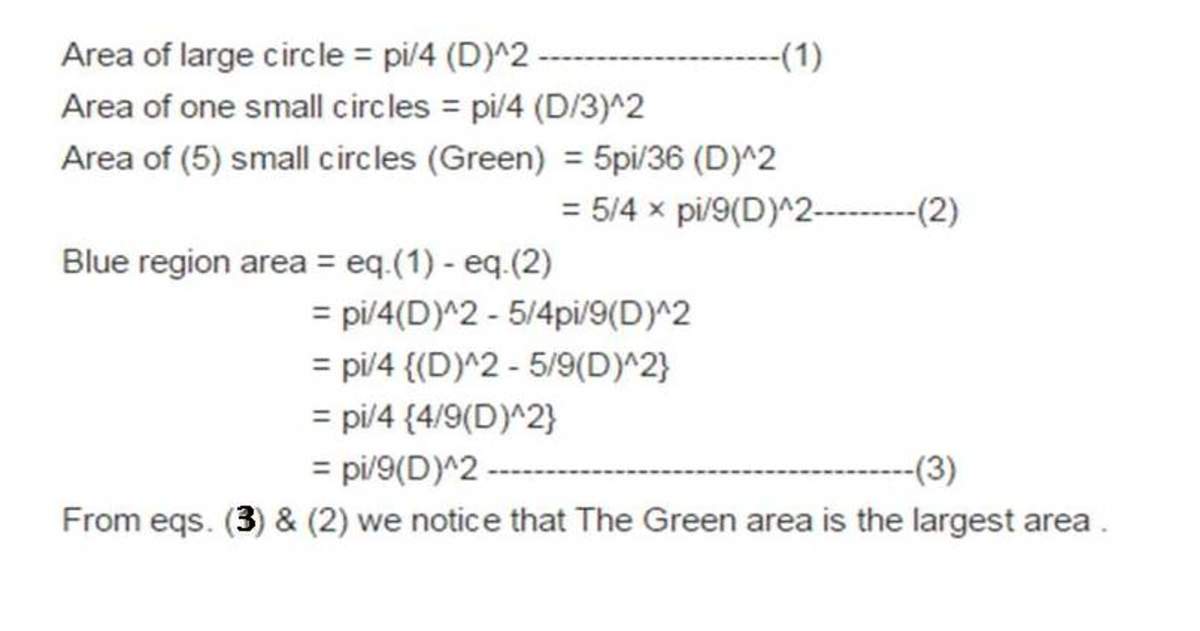Does Rotation Help?

The above diagram shows 5 equal circles arranged in such a way that their centres form a cross ( ). A large circle is then circumscribed these smaller circles such that it touches all 4 outer circles.
Which of the following has a larger area?
The green region, or the blue region?
This section requires Javascript.
You are seeing this because something didn't load right. We suggest you, (a) try
refreshing the page, (b) enabling javascript if it is disabled on your browser and,
finally, (c)
loading the
non-javascript version of this page
. We're sorry about the hassle.

Relevant wiki: Circles - Area
Observe that the vertical diameter of the larger circle intersects the diameters of the 3 smaller circles. Let us say the radius of the smaller circle is r , hence the radius of the larger circle would be 3 r . Therefore:
ar(of 5 small circles) = 5 × ( π r 2 ) = 5 π r 2
ar(of large circle) = π ( 3 r ) 2 = 9 π r 2
∴ ar(of the region outside the 5 small circles but inside the large circle) = 9 π r 2 − 5 π r 2 = 4 π r 2
Thus it is clear that the area of the 5 small circles = 5 π r 2 is greater than the area of the region outside the 5 small circles but inside the large circle = 4 π r 2